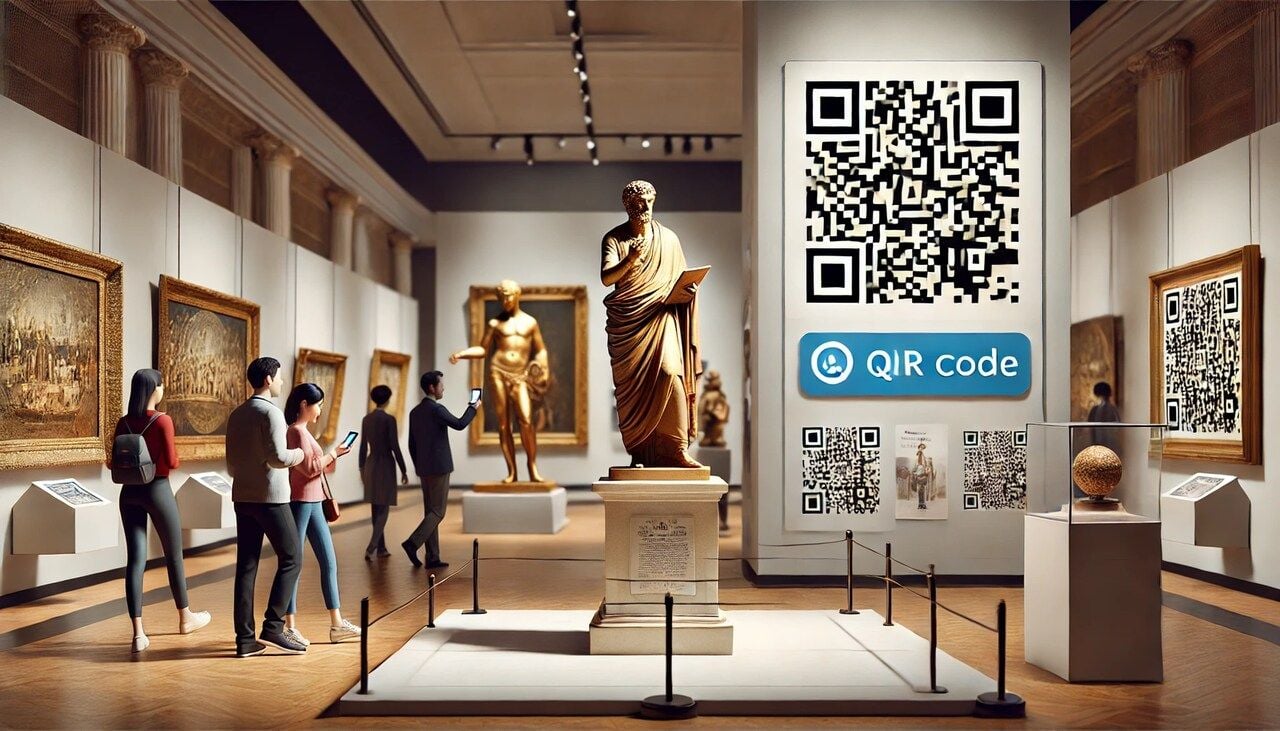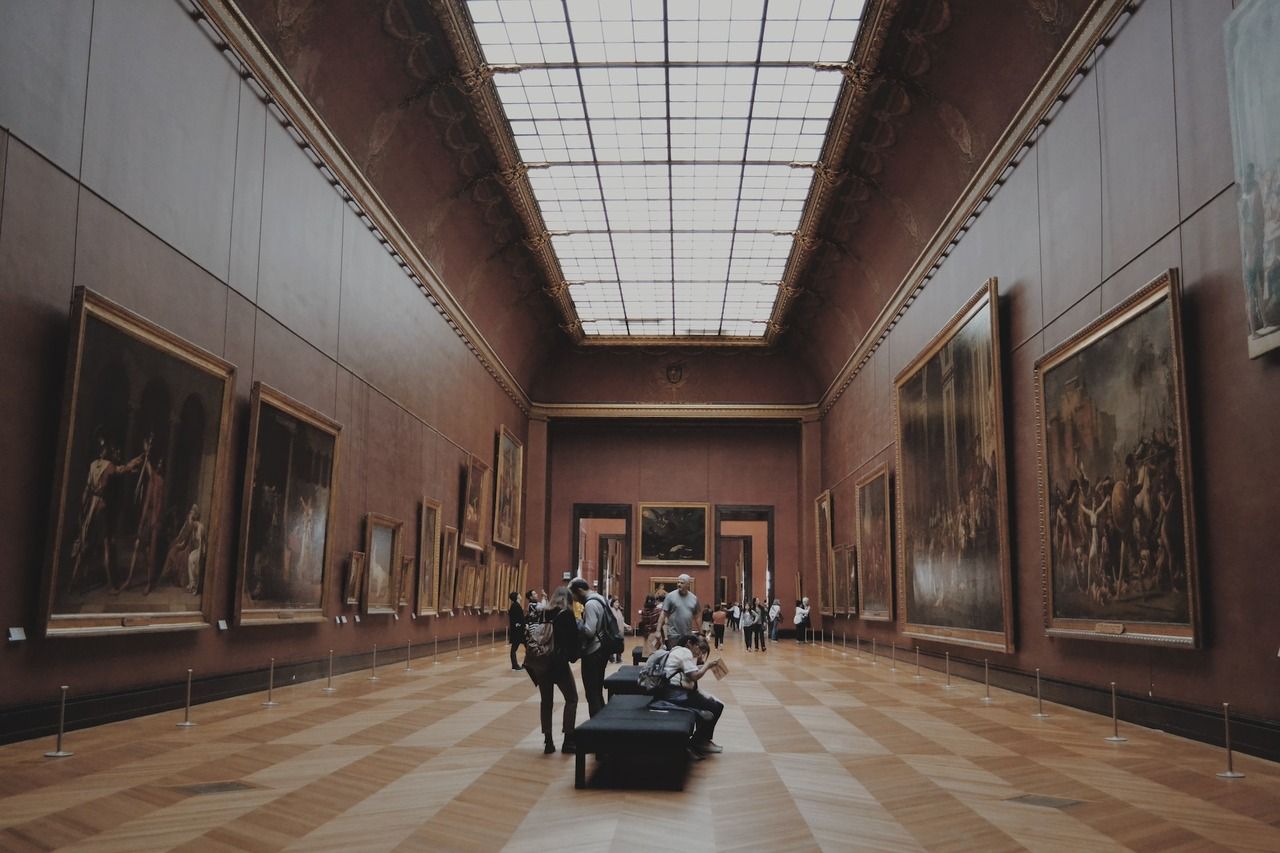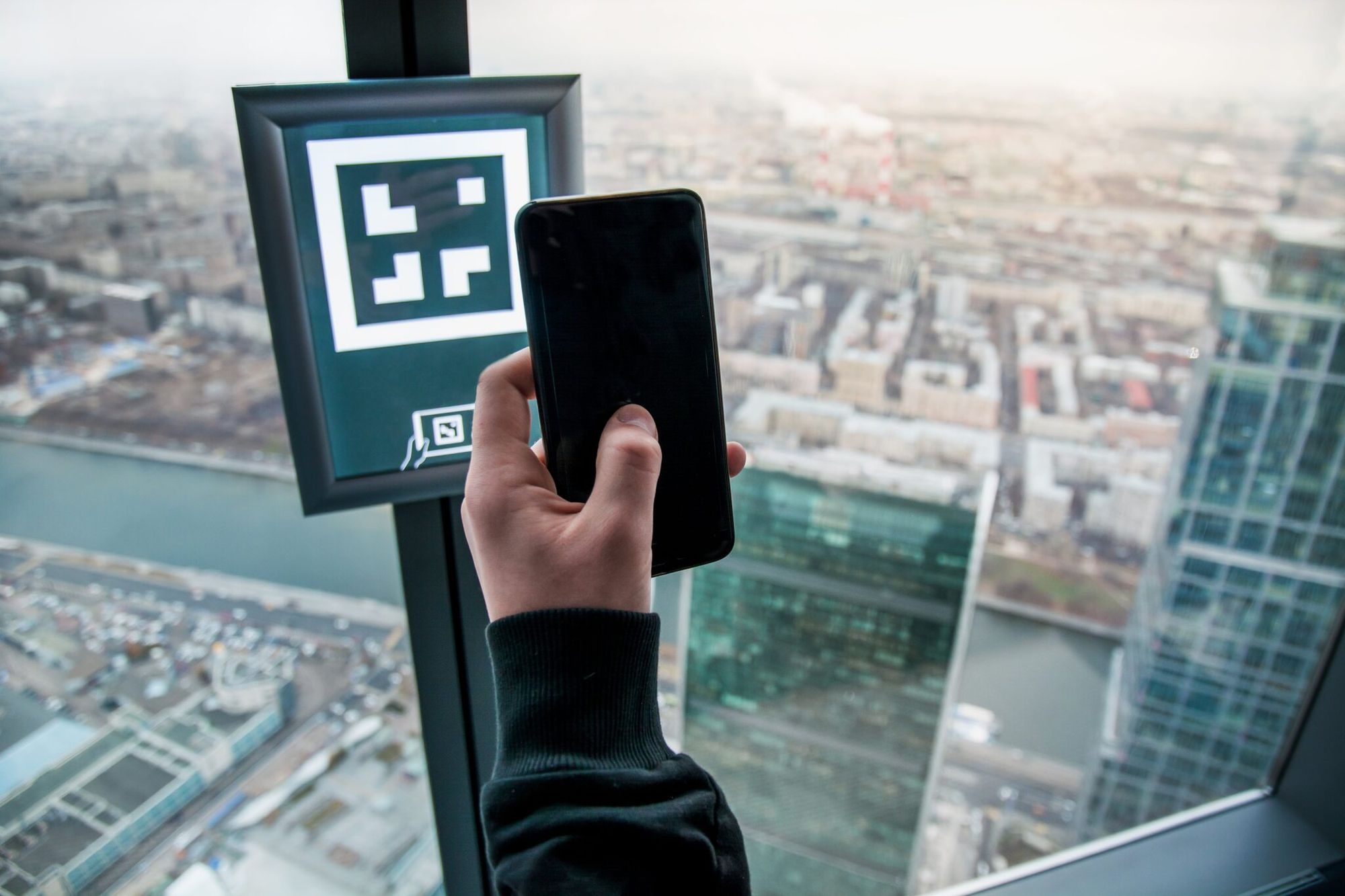QR codes stand out as a transformative tool in the museum landscape.
This revitalized digital tool has the potential to redefine the visitor experience.
In this article, we delve into how QR codes can revolutionize museum visits and share actionable strategies for implementation.
What is a QR Code for Museums?
A QR code for museums is a versatile tool that enhances visitor engagement by providing instant access to additional information, multimedia content, and interactive experiences.

These codes can be strategically placed throughout the museum, allowing visitors to scan them with their smartphones to learn more about exhibits, artifacts, and events.
QR codes in museums serve as digital gateways to rich, informative content that enriches the visitor experience.
16 Ways to Use QR Codes in Museums
| Ways to Use QR Codes for Museums |
|---|
| Exhibit Information |
| Audio Guides |
| Interactive Maps |
| Educational Content |
| Virtual Tours |
| Event Information |
| Augmented Reality (AR) |
| Feedback and Surveys |
| Donation and Membership |
| Temporary Exhibits and Pop-Ups |
| Merchandise and Souvenirs |
| Share Facts and History About Art Pieces |
| Use QR Codes for Museum Guides, Maps, and Scavenger Hunts |
| Provide Exhibit, Artwork, and Artist Information |
| Utilize QR Codes for Event Registration, Contests, and Surveys |
| Promote Extra Reading Materials and Audio Tours |
1. Exhibit Information
- Detailed Descriptions: QR codes next to exhibits can link to detailed descriptions, historical context, and additional facts that go beyond the information on display.
- Multimedia Content: Provide access to videos, high-resolution images, and audio clips that offer a deeper understanding of the exhibit.
2. Audio Guides
- Personal Audio Tours: Instead of renting audio devices, visitors can scan QR codes to listen to audio tours on their smartphones, enhancing the auditory experience.
- Multilingual Support: Offer audio guides in multiple languages, making the museum accessible to a diverse range of visitors.
3. Interactive Maps
- Navigation Assistance: QR codes can link to interactive maps that help visitors navigate the museum to find specific exhibits, restrooms, and other amenities.
- Customized Routes: Provide different tour routes tailored to interests, such as "Highlights Tour," "Children's Tour," or "Historical Artifacts."
4. Educational Content
- In-Depth Articles: Link to scholarly articles, research papers, and essays related to the exhibits, giving visitors the opportunity to delve deeper into topics of interest.
- Interactive Quizzes: Engage visitors with quizzes and trivia related to the exhibits, enhancing learning and retention.
5. Virtual Tours
- Remote Access: QR codes can offer virtual tours of the museum for those who are unable to visit in person, including detailed walkthroughs of exhibitions.
- Behind-the-Scenes Access: Provide virtual tours of areas not typically accessible to the public, such as conservation labs or storage facilities.
6. Event Information
- Upcoming Events: QR codes can link to a calendar of upcoming events, workshops, and lectures, allowing visitors to stay informed and register for events.
- Real-Time Updates: Provide real-time updates and notifications about events happening on the day of the visit.

7. Augmented Reality (AR)
- Interactive Experiences: Use QR codes to trigger augmented reality experiences, such as 3D models of artifacts, interactive timelines, or virtual reconstructions of historical events.
- Enhanced Exhibits: Enhance static displays with AR features that allow visitors to explore different layers of information and interact with exhibits in new ways.
8. Feedback and Surveys
- Visitor Feedback: QR codes can link to feedback forms or surveys, enabling visitors to share their experiences and provide valuable insights to the museum.
- Interactive Polls: Engage visitors with interactive polls and questions related to the exhibits or overall museum experience.
9. Donation and Membership
- Easy Donations: Simplify the donation process by linking QR codes to online donation pages, encouraging visitors to support the museum financially.
- Membership Information: Provide information on membership benefits and sign-up forms, making it easy for visitors to become museum members.
10. Temporary Exhibits and Pop-Ups
- Special Exhibits: QR codes can link to information and multimedia content specific to temporary exhibits or pop-up displays, enhancing the visitor experience for these limited-time offerings.
- Exclusive Content: Offer exclusive content, such as interviews with curators or special behind-the-scenes videos, accessible only through QR codes at these exhibits.
11. Merchandise and Souvenirs
- Product Information: QR codes in the museum shop can link to detailed product information, reviews, and even how the proceeds benefit the museum.
- Exclusive Offers: Provide access to special offers and discounts on merchandise through QR codes, encouraging visitors to make purchases.
12. Share Facts and History About Art Pieces
- Detailed Information: QR codes can provide detailed information about artworks, including the artist’s background, creation process, and historical context.
- Multilingual Options: Offer information in multiple languages to cater to international visitors.
- Additional Resources: Link to videos, high-resolution images, and articles for a more comprehensive understanding.
13. Use QR Codes for Museum Guides, Maps, and Scavenger Hunts
- Self-Guided Tours: QR codes can link to audio guides or detailed descriptions, allowing visitors to explore at their own pace.
- Interactive Maps: Provide digital maps via QR codes to help visitors navigate large museums easily.
- Scavenger Hunts: Place QR codes with clues throughout the museum to create interactive scavenger hunts, making visits more engaging and fun.
14. Provide Exhibit, Artwork, and Artist Information
- Multimedia Content: QR codes can link to image galleries, video documentaries, and audio descriptions related to exhibits.
- VR Experiences: Enhance engagement with virtual reality experiences that recreate historical contexts or environments of artifacts.
15. Utilize QR Codes for Event Registration, Contests, and Surveys
- Event Sign-Ups: Streamline event registrations by linking QR codes to online sign-up forms.
- Contests and Surveys: Use QR codes to facilitate contest participation and collect visitor feedback through surveys.
16. Promote Extra Reading Materials and Audio Tours
- Additional Reading: Link QR codes to a library of books, articles, and research papers for visitors interested in deeper exploration.
- Audio Tours: Provide audio tours for a hands-free, immersive experience that is beneficial for both regular and visually impaired visitors.
Benefits of QR Codes in Museums

- Enhanced Visitor Experience: QR codes provide instant access to detailed information, videos, audio guides, and virtual tours, making the museum visit more interactive and informative.
- Language Accessibility: By linking QR codes to multilingual content, museums can cater to international visitors, ensuring everyone can enjoy and understand the exhibits.
- Space Efficiency: Instead of crowding physical display areas with text, QR codes offer a clean and modern solution to provide in-depth information without cluttering the visual space.
- Engagement and Interaction: Interactive elements such as quizzes, surveys, and augmented reality experiences can be accessed through QR codes, making the visit more engaging.
- Sustainability: Reduces the need for printed materials like brochures and guidebooks, contributing to environmental sustainability.
3 Top Museums that are Excellently using QR codes
Let's take a look at some inspiring examples of museums around the world that have brilliantly incorporated QR codes into their visitor experience strategy.
From showcasing treasures of the ancient world to engaging audiences with intriguing stories, these museums have used QR codes to redefine their visitor interaction and engagement.
The Galloway Hoard Exhibition: A QR Code Success Story
The National Museum of Scotland's Galloway Hoard exhibition sets a brilliant example of how QR codes can be used to amplify the visitor experience.
This fascinating exhibition unveiled a treasure trove of Viking-age objects found hidden in Scotland, dating back to around AD 900. They consisted of over 100 items of gold, silver, and jeweled decorations, giving valuable insights into the Viking age.
The exhibition also released a digital guide in the form of a QR code. This guide contained a list of all artifacts on display, their detailed description, and high-quality images, which visitors could take home as a digital souvenir.
The museum responded positively to its unique blend of ancient artifacts and modern technology, marking The Galloway Hoard as a successful case of QR code implementation.
The Typewriter Revolution: Revolutionizing Visitor Experience with QR Codes
Moving towards a completely different era, The Typewriter Revolution at the Currier Museum of Art displayed a comprehensive collection of antique typewriters.
This exhibit aimed to spark conversations around the impact of typewriters on our history and culture. The museum took an innovative step by introducing a QR code for each typewriter, inviting visitors to interact with these antiques like never before.
On scanning the QR code placed next to each typewriter, the visitors could access detailed information about the typewriter's make, model, year, and unique features. Moreover, the QR codes led to a virtual typing simulation, where visitors could experience typing on these vintage machines from their devices.
It's interesting to note that the museum also used QR codes to gather visitor feedback on various aspects of the exhibit and its impact on their overall museum experience. This direct line of communication provided the museum with valuable insights and data for future exhibitions.
Inspiring Walter Scott: Engaging Visitors with QR codes
Lastly, 'Inspiring Walter Scott' at Abbotsford, the historic residence of Sir Walter Scott, incorporated QR codes to enhance their storytelling and make the visitor experience more engaging.
The museum enhanced its visitor audio tour experience through the sophisticated use of QR codes.
Moreover, the museum also used QR codes in its marketing strategies. They introduced a unique QR code on their promotional materials that, when scanned, directed users to a beautiful montage video of Abbotsford, weaving a narrative around the life of Sir Walter Scott.
In Conclusion
In conclusion, after exploring how museum QR codes, it's evident that their incorporation is valuable.
These simple yet powerful tools serve museums in their mission of cultural preservation and greatly enhance the visitor experience by deepening understanding, stirring emotions, and sparking discussions around exhibits.
QR codes, therefore, are a deserving investment for museums and a great ease for visitors.
Frequently Asked Questions
What steps should museums take to ensure the privacy and security of QR-code information access?
Museums should ensure that QR codes link to secure (HTTPS) websites, avoid collecting unnecessary personal information, and inform visitors about how their data will be used and protected. Regular monitoring and updates to the QR code links are also important for maintaining security.
How do museums ensure that visitors can easily scan the QR codes?
Museums ensure QR codes are easily scannable by printing them in high resolution, placing them in inaccessible and visible locations, and providing clear instructions on how to scan them. They also test the codes on various devices to ensure compatibility.
How can QR codes be used to promote museum events and activities?
QR codes can link to event registration pages, upcoming event calendars, and special promotions. This makes it easy for visitors to sign up for workshops, lectures, and other activities directly from their smartphones.


